-
 Bitcoin
Bitcoin $117700
-0.03% -
 Ethereum
Ethereum $3805
0.49% -
 XRP
XRP $3.098
-1.00% -
 Tether USDt
Tether USDt $1.000
0.03% -
 BNB
BNB $792.8
-1.72% -
 Solana
Solana $177.9
-1.95% -
 USDC
USDC $1.000
0.02% -
 Dogecoin
Dogecoin $0.2202
-1.55% -
 TRON
TRON $0.3278
-2.92% -
 Cardano
Cardano $0.7641
-2.43% -
 Hyperliquid
Hyperliquid $42.21
-2.68% -
 Sui
Sui $3.758
-1.58% -
 Stellar
Stellar $0.4080
-3.21% -
 Chainlink
Chainlink $17.75
-0.33% -
 Bitcoin Cash
Bitcoin Cash $591.8
4.96% -
 Hedera
Hedera $0.2561
-3.09% -
 Avalanche
Avalanche $23.34
-4.24% -
 Litecoin
Litecoin $110.7
1.96% -
 UNUS SED LEO
UNUS SED LEO $8.956
-0.01% -
 Toncoin
Toncoin $3.410
0.79% -
 Ethena USDe
Ethena USDe $1.001
0.03% -
 Shiba Inu
Shiba Inu $0.00001288
-1.82% -
 Uniswap
Uniswap $10.07
-2.06% -
 Polkadot
Polkadot $3.807
-2.27% -
 Monero
Monero $308.2
-2.15% -
 Dai
Dai $1.000
0.03% -
 Bitget Token
Bitget Token $4.521
-0.30% -
 Pepe
Pepe $0.00001134
-1.52% -
 Cronos
Cronos $0.1457
0.65% -
 Aave
Aave $274.9
-2.47%
How to avoid false signals from Bollinger Bands?
Bollinger Bands help identify volatility and potential reversals, but combining them with RSI, volume, and price confirmation reduces false signals.
Jul 30, 2025 at 11:42 pm
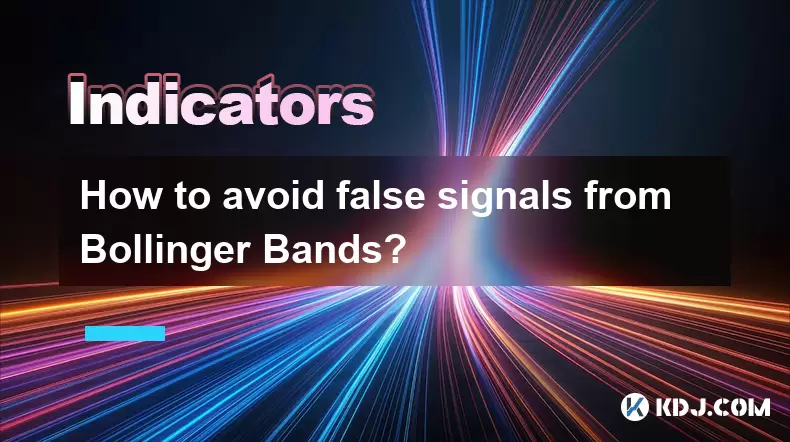
Understanding Bollinger Bands and Their Core Components
Bollinger Bands are a widely used technical analysis tool developed by John Bollinger in the 1980s. They consist of three lines plotted on a price chart: a simple moving average (SMA), typically over 20 periods, and two outer bands that represent standard deviations above and below the SMA. The default setting uses two standard deviations, which means that approximately 95% of price action should fall within the bands under normal market conditions. The bands expand and contract based on market volatility — they widen during high volatility and narrow during low volatility. This dynamic nature makes them useful for identifying potential overbought or oversold conditions, breakouts, and trend strength.
However, traders often encounter false signals, such as premature entries or exits based on price touching or crossing the bands without a sustained move. These misleading indications can result in losses if not properly filtered. Recognizing the structure and behavior of Bollinger Bands is the first step in avoiding such pitfalls.
Recognizing False Breakouts and Whipsaws
A common false signal occurs when price touches or briefly moves outside the upper or lower Bollinger Band but quickly reverses, creating a whipsaw effect. This is especially prevalent in ranging or choppy markets where volatility contracts, causing the bands to tighten. Traders might interpret a touch of the lower band as a buy signal, only for the price to continue declining.
To reduce exposure to such false breakouts:
- Wait for candlestick confirmation after the price interacts with a band. For example, do not enter a long trade just because price touches the lower band; instead, wait for a bullish candle (such as a hammer or engulfing pattern) to close above the band or within the range.
- Avoid trading band touches during low volatility periods, identifiable by narrow band width. A contraction often precedes a breakout, but direction is uncertain until momentum confirms.
- Monitor volume: a genuine breakout from a Bollinger Band should ideally be accompanied by increasing trading volume, signaling strong participation.
Using the Bollinger Band Squeeze for Higher-Probability Setups
The Bollinger Band squeeze occurs when the bands move closer together, indicating decreasing volatility. This condition often precedes a significant price move, but the direction is not guaranteed. Many traders mistake the squeeze itself as a signal, leading to early entries.
To properly use the squeeze:
- Identify the squeeze by observing when the bandwidth (the difference between upper and lower bands) reaches a local minimum.
- Wait for a break of the band accompanied by a strong candle and volume spike to determine direction.
- Combine with momentum indicators like the Relative Strength Index (RSI) or MACD to confirm the breakout direction. For example, if price breaks above the upper band and RSI moves above 70, it strengthens the bullish case.
- Use a price filter, such as requiring the close of two consecutive candles beyond the band, to avoid false breakouts.
Combining Bollinger Bands with Other Indicators
Relying solely on Bollinger Bands increases the risk of false signals. Integrating them with complementary tools enhances reliability:
- RSI (Relative Strength Index): Helps confirm overbought (>70) or oversold (<30) conditions in alignment with band touches. If price touches the lower band and RSI is below 30 and rising, the buy signal gains validity.
- Volume Oscillator: Validates breakout attempts. A surge in volume when price exits the bands supports the move's legitimacy.
- Moving Average Convergence Divergence (MACD): Use MACD crossovers or histogram expansion to confirm trend direction when price interacts with bands.
- Support and Resistance Levels: If the lower Bollinger Band coincides with a known support level, the bounce probability increases. Similarly, upper band meeting resistance strengthens a reversal signal.
Avoid signals where multiple indicators conflict. For example, if price touches the lower band but MACD shows strong bearish momentum, a long entry may be premature.
Adjusting Settings Based on Market Conditions
The default 20-period SMA and 2-standard deviation settings may not suit all assets or timeframes. Cryptocurrency markets, known for high volatility, often require customization:
- For highly volatile coins like meme tokens, increasing the standard deviation to 2.5 or using a shorter SMA (e.g., 14 periods) can reduce noise.
- On lower timeframes (e.g., 5-minute charts), consider using a 3-standard deviation setting to avoid over-trading false touches.
- Test settings via backtesting on historical data using platforms like TradingView. Apply the strategy across multiple market cycles (bull, bear, sideways) to assess consistency.
- Use adaptive band calculations, such as replacing SMA with an EMA or incorporating ATR-based volatility adjustments, for more responsive bands.
Practicing Risk Management with Bollinger Band Strategies
Even with refined signals, false entries will occur. Effective risk control is essential:
- Always use a stop-loss order. For long entries at the lower band, place the stop below the recent swing low or below the band itself.
- Size positions based on volatility. Wider bands suggest higher risk; reduce position size accordingly.
- Avoid overtrading during consolidation phases. Wait for clear band expansion and directional closes.
- Keep a trade journal to log every Bollinger Band signal, noting whether it was valid or false, and the conditions present. Over time, patterns will emerge to refine your filter criteria.
Frequently Asked Questions
Can Bollinger Bands be used effectively on all cryptocurrency timeframes?
Yes, but effectiveness varies. On very short timeframes like 1-minute charts, Bollinger Bands generate excessive noise due to rapid price fluctuations. They perform better on 1-hour, 4-hour, and daily charts where trends and volatility patterns are clearer. Adjusting the period length and standard deviation based on the timeframe improves accuracy.
What does it mean when price walks along the upper or lower band?
When price consistently hugs the upper band, it indicates a strong uptrend, not necessarily overbought conditions. Similarly, hugging the lower band suggests a strong downtrend. In trending markets, interpreting band touches as reversal signals can lead to false exits. Instead, consider using the bands as dynamic support/resistance and trade in the trend’s direction.
How can I automate Bollinger Band signal filtering?
Use trading bots or scripts on platforms like TradingView (Pine Script) to code conditions. For example, require that RSI > 50 before accepting a long signal near the lower band. You can also program alerts only when price closes beyond a band with volume above a moving average.
Is it safe to trade when price is between the bands without touching them?
Trading within the bands without interaction is generally low-probability for reversal setups. This zone often reflects neutral momentum. Focus on price actions near the bands or breakout attempts. Use the middle SMA as a dynamic trend filter — for instance, only take long signals when price is above the middle line in an uptrend.
Disclaimer:info@kdj.com
The information provided is not trading advice. kdj.com does not assume any responsibility for any investments made based on the information provided in this article. Cryptocurrencies are highly volatile and it is highly recommended that you invest with caution after thorough research!
If you believe that the content used on this website infringes your copyright, please contact us immediately (info@kdj.com) and we will delete it promptly.
- Bitcoin, Penguins, and Meme Coins: A Wild Ride in Crypto Town
- 2025-07-31 16:30:14
- Whale Movement and Altcoins: Buying Pressure Heats Up!
- 2025-07-31 16:30:14
- Pi Network's Price Crash: A Crypto Disappointment or a Buying Opportunity?
- 2025-07-31 17:10:12
- Ether Machine's ETH Accumulation: A New York Minute on Corporate Crypto Strategies
- 2025-07-31 17:10:12
- Bitcoin Price on the Edge: Trendline Break or Breakdown?
- 2025-07-31 17:50:12
- Dogecoin, Investors, and Ozak AI: A New Era of Crypto Investments?
- 2025-07-31 17:50:12
Related knowledge
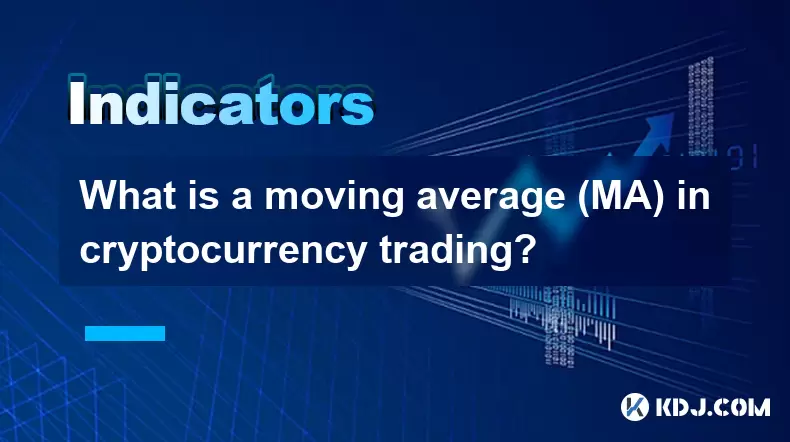
What is a moving average (MA) in cryptocurrency trading?
Jul 31,2025 at 06:30pm
Understanding the Concept of Moving Average (MA)A moving average (MA) is a widely used technical analysis tool in cryptocurrency trading that helps sm...

Is Parabolic SAR suitable for swing trading crypto?
Jul 31,2025 at 05:29pm
Understanding Parabolic SAR in Cryptocurrency TradingThe Parabolic SAR (Stop and Reverse) is a technical indicator developed by J. Welles Wilder that ...
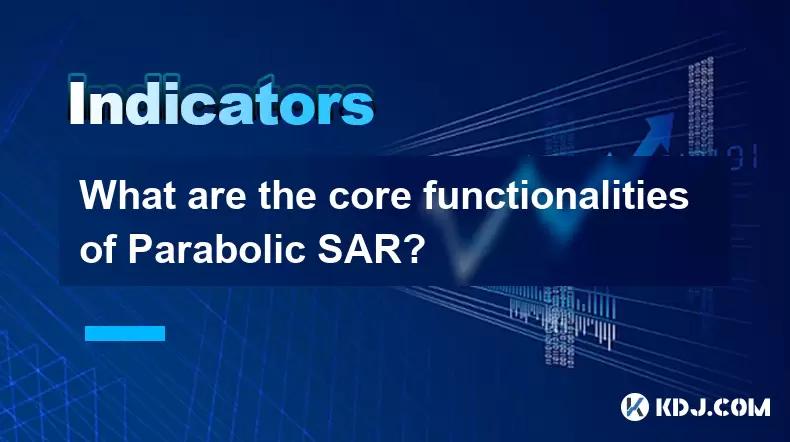
What are the core functionalities of Parabolic SAR?
Jul 31,2025 at 04:57pm
Understanding the Parabolic SAR IndicatorThe Parabolic SAR (Stop and Reverse) is a technical analysis tool developed by J. Welles Wilder Jr. It is pri...
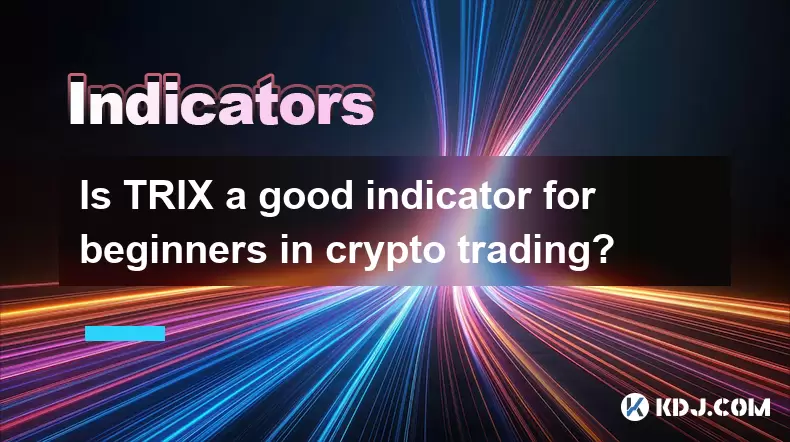
Is TRIX a good indicator for beginners in crypto trading?
Jul 31,2025 at 06:16pm
Understanding the TRIX Indicator in Cryptocurrency TradingThe TRIX (Triple Exponential Average) indicator is a momentum oscillator designed to filter ...
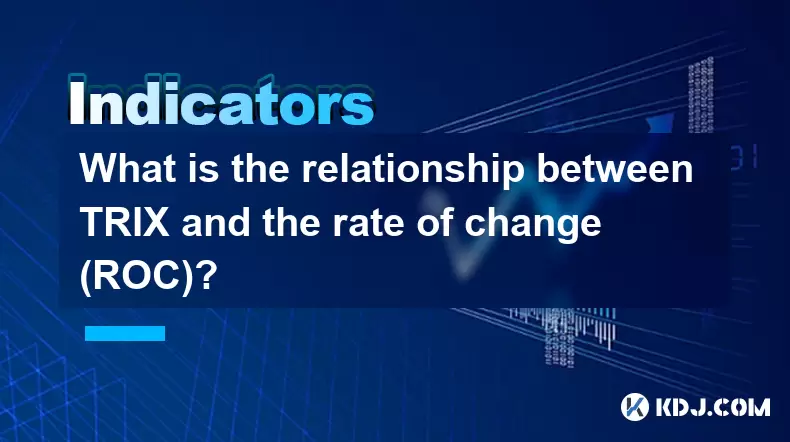
What is the relationship between TRIX and the rate of change (ROC)?
Jul 31,2025 at 03:14pm
Understanding TRIX and Its Core MechanismTRIX, or the Triple Exponential Average, is a momentum oscillator used in technical analysis to identify over...
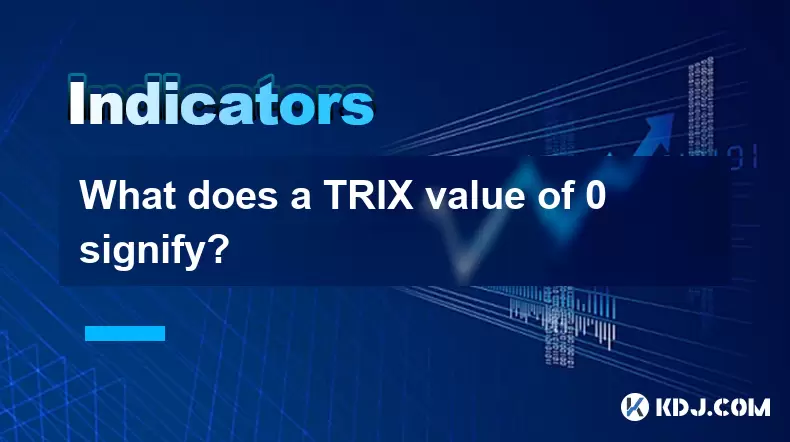
What does a TRIX value of 0 signify?
Jul 31,2025 at 02:21pm
Understanding the TRIX Indicator in Cryptocurrency TradingThe TRIX (Triple Exponential Average) indicator is a momentum oscillator used in technical a...

What is a moving average (MA) in cryptocurrency trading?
Jul 31,2025 at 06:30pm
Understanding the Concept of Moving Average (MA)A moving average (MA) is a widely used technical analysis tool in cryptocurrency trading that helps sm...

Is Parabolic SAR suitable for swing trading crypto?
Jul 31,2025 at 05:29pm
Understanding Parabolic SAR in Cryptocurrency TradingThe Parabolic SAR (Stop and Reverse) is a technical indicator developed by J. Welles Wilder that ...

What are the core functionalities of Parabolic SAR?
Jul 31,2025 at 04:57pm
Understanding the Parabolic SAR IndicatorThe Parabolic SAR (Stop and Reverse) is a technical analysis tool developed by J. Welles Wilder Jr. It is pri...

Is TRIX a good indicator for beginners in crypto trading?
Jul 31,2025 at 06:16pm
Understanding the TRIX Indicator in Cryptocurrency TradingThe TRIX (Triple Exponential Average) indicator is a momentum oscillator designed to filter ...

What is the relationship between TRIX and the rate of change (ROC)?
Jul 31,2025 at 03:14pm
Understanding TRIX and Its Core MechanismTRIX, or the Triple Exponential Average, is a momentum oscillator used in technical analysis to identify over...

What does a TRIX value of 0 signify?
Jul 31,2025 at 02:21pm
Understanding the TRIX Indicator in Cryptocurrency TradingThe TRIX (Triple Exponential Average) indicator is a momentum oscillator used in technical a...
See all articles

























































































